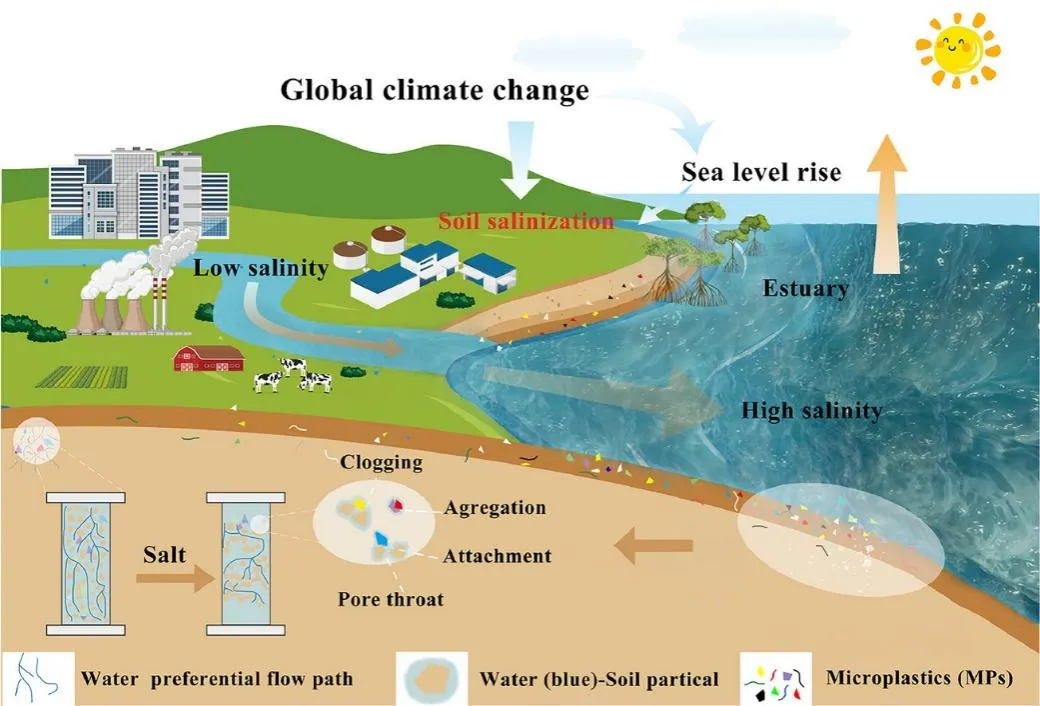Xiaoting Zhang, Zhanyi Shen, Jianyong Wu, Manlin Su, Linke Zheng, Minwei Xie, Hualong Hong, Xiaohong Huang, Haoliang Lu*
Water Research
https://doi.org/10.1016/j.watres.2024.122463
Published: 21 September 2024
Abstract
Microplastics (MPs) pollution in coastal wetlands has attracted global attention. However, few studies have focused on the effect of soil properties and structure on MP transport in coastal wetlands. Salinity is one of the most pivotal environmental factors and varies in coastal wetlands. Here, we conducted column experiments and employed fluorescent labeling combined with Derjaguin–Landau–Verwey–Overbeek (DLVO) theoretical calculations to reveal the vertical transport behavior of MPs. Specifically, we investigated the influence of five salinity levels (0, 0.035, 0.35, 3.5, and 35 PSU) on MP transport in different coastal wetlands soils and a sand through the X-ray photoelectron spectroscopy and nondestructive computed tomography technique. The results indicated that the migration capability of MPs in soils is significantly lower than in quartz sand, and that the migration capability varies depending on the soil type. This variability may be due to soil minerals and microporous structures providing numerous attachment sites for MPs and may be explained by the DLVO energy barrier of MP-Soil (6568–7767 KT) and MP-sand (5250 KT). Salinity plays a crucial role in modifying the chemical properties of pore water (i.e., zeta potential) as well as altering the soil elemental composition and pore structure. At 0 PSU, the maximum C/C0 of MPs through the sand, Soil 1, and Soil 2 transport columns were 37.86 ± 2.36 %, 23.96 ± 1.71 %, and 3.94 ± 0.68 %, respectively. When salinity increased to 3.5 PSU, MP mobility decreased by over 20 %. Additionally, a salinity of 35 PSU may alter the soil pore distribution, thereby changing water flow paths and velocities to constrain the migration of MPs in soils. These findings could provide valuable insights into understanding the environmental behavior and transport mechanisms of MPs, and lay a solid scientific basis for accurately simulating and predicting the fate of MPs in coastal wetland water–soil systems. We highlight the effect of salinity on the fate of MPs and the corresponding priority management of MPs risks under the background of global climate change.
